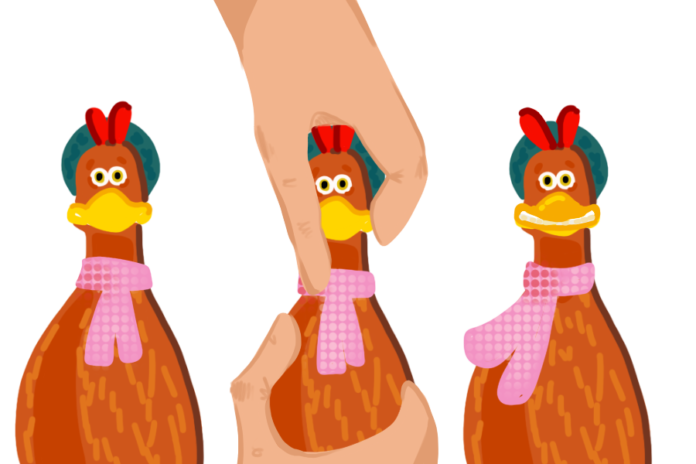Why this “antique” animation style is both unique and challenging
By MAYA KORNYEYEVA — mkornyeyeva@ucdavis.edu
Among the dozens of different animation techniques existing today, I believe that none are as hands-on and tedious as stop-motion animation. Tracing its roots back to the early 20th century, stop-motion animation was first widely experimented with by Wladyslaw Starewicz, an avid insect collector in Lithuania who created short films of fiction by setting up beetles and other insects and moving them one tiny bit at a time in front of a camera. After every adjustment — snap! — a photo would be taken, and, over thousands of images, the insects appeared to be moving on their own on screen.
After these films gained widespread popularity and praise for their fine attention-to-detail and revolutionary approach to filmmaking, other entertainment companies began to take this concept of stop-motion animation and run with it. Over the following century, movies like “King Kong” (1933), “Nightmare Before Christmas” (1993) and “Chicken Run” (2000) were released as stunning visual successes, inspiring sequels and the creation of new technology to help aid animators on the set.
One of these revolutionizing stop-motion techniques was the introduction of the “armature:” a metal frame with specifically designed joints for every character in the picture. Having this frame allowed animators to create gravity-defying poses and truly explore the possibilities of what expressions and movements a clay doll or puppet could achieve. Beyond a metal frame, stop-motion animators also tested ways to manipulate facial expressions, such as using clay to mold every change or taking removable pieces and attaching them to the character to show actions such as smiling, blinking, laughing and crying.
I recently rewatched some stop-motion classics from Aardman Animations, a studio that is famous for its use of clay in stop motion. These films included “Chicken Run,” “Chicken Run: Dawn of the Nugget” and “Wallace and Gromit.” Every single one left me incredibly inspired. I loved the details of everyday objects being used on the miniature set, such as tiny bottles of toothpaste or paper clips. In each scene in the movie, I couldn’t help but think about a human hand moving the doll a millimeter in multiple frames to create such fluid and beautiful animation.
The set design is another aspect of stop motion that is so meticulously hand-crafted that it should be displayed in a museum somewhere. Down to the tiny plants, the gravel on the roads and the miniature villages and buildings, I can truly appreciate the days that the production team put into constructing each location.
Beyond “claymation,” there is another show that I would like to highlight when it comes to stop motion. Recently, Netflix released a Japanese stop-motion animation called “Pokemon Concierge,” based on the Pokemon franchise founded by Satoshi Tajiri in partnership with Nintendo.
The stop-motion animation style is a mix of fuzzy, almost plush-looking Pokemon characters and plastic dolls for the human characters. The show has four episodes with a total run-time of 60 minutes. It is a beautiful story with a female lead who accepts a job at a remote Pokemon resort after a series of unlucky events, learning how to take care of the guests and Pokemon and, most importantly, have fun and be herself.
I particularly like how the show developed relationships between the Pokemon and the human concierges and how wholesome and kind-hearted their interactions were — I kid you not that every 2-3 minutes of the show, I said an audible “Awwwww.” The fluidity of the animation, 24 frames-per-second as opposed to the common 12, helped to truly bring the story alive.
If you ever have time to spare, I highly suggest watching a few stop-motion animation films and paying close attention to the way the animators portray movement, expression and scenery, as well as the way they develop the characters themselves. Unlike traditional 2D or 3D animation, stop motion has a frame quality that can be both unnerving and exceptionally charming. Alternatively, you can experiment and create your own animation; just find your object, set up your camera and start adjusting.
Written by: Maya Kornyeyeva — mkornyeyeva@ucdavis.edu
Disclaimer: The views and opinions expressed by individual columnists belong to the columnists alone and do not necessarily indicate the views and opinions held by The California Aggie.




